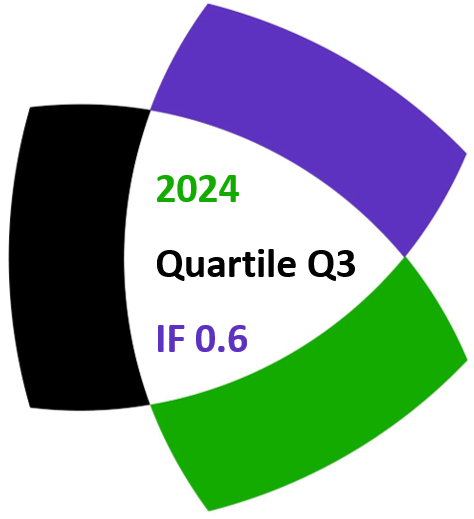Prasanta K Ray, Sunima Patel and Manoj K Mandal
Notes on Number Theory and Discrete Mathematics
Print ISSN 1310–5132, Online ISSN 2367–8275
Volume 22, 2016, Number 4, Pages 41–48
Full paper (PDF, 173 Kb)
Details
Authors and affiliations
Prasanta K Ray ![]()
Veer Surendra Sai University of Technology
Odisha, Burla, India
Sunima Patel ![]()
National Institute of Technology
Rourkela, India
Manoj K Mandal ![]()
National Institute of Technology
Rourkela, India
Abstract
It is well-known that the balancing numbers are the square roots of the triangular numbers and are the solutions of the Diophantine equation 1 + 2 + … + (n − 1) = (n + 1) + (n + 2) + … + (n + r), where r is the balancer corresponding to the balancing number n. Thus if n is a balancing number, then 8n2 + 1 is a perfect square and its positive square root is called a Lucas-balancing number. The goal of this paper is to establish some new identities of these numbers.
Keywords
- Generating function
- Balancing
- Congruence
AMS Classification
- 11B39
- 11B83
References
- Alvarado, S., Dujella, A., & Luca, F. (2012) On a conjecture regarding balancing with powers of Fibonacci numbers, Integers, 12, 1127–1158.
- Behera, A., & Panda, G. K. (1999) On the square roots of triangular numbers, The Fibonacci Quarterly, 37(2), 98–105.
- Belbachair, H., & Szalay, L. (2014) Balancing in direction (1; –1) in Pascal’s triangle, Armenian Journal of mathematics, 6(1), 32–40.
- B´erczes, A., Liptai, K., & Pink, I. (2010) On generalized balancing sequences, The Fibonacci Quarterly, 48(2), 121–128.
- Irmak, N. (2013) Balancing with balancing powers, Miskolc Mathematical Notes, 14(3), 951–957.
- Keskin, R., & Karaatly, O. (2012) Some new properties of balancing numbers and square triangular numbers, Journal of Integer Sequences, 15(1), Article 12.1.4.
- Kovacs, T., Liptai, K., & Olajos, P. (2010) On (a; b)-type balancing numbers, Publicationes Mathematicae Debrecen, 77(3–4), 485–498.
- Olajos, P. (2010) Properties of balancing, cobalancing and generalized balancing numbers, Annales Mathematicae et Informaticae, 37, 125–138.
- Panda, G. K., & Ray, P. K. (2011) Some links of balancing and cobalancing numbers with Pell and associated Pell numbers, Bulletin of the Institute of Mathematics, Academia Sinica (New Series), 6(1), 41–72.
- Panda, G. K. (2009) Some fascinating properties of balancing numbers, Proceeding of the Eleventh International Conference on Fibonacci Numbers and Their Applications, Cong. Numerantium, 194, 185–189.
- Panda, G. K., & Rout, S. S. (2013) Gap balancing numbers, The Fibonacci Quarterly, 51(3), 239–248.
- Panda, G. K., & Rout, S. S. (2014) Periodicity of Balancing numbers, Acta Math. Hungar., 143(2), 274–286.
- Ray, P. K. (2012) Certain matrices associated with balancing and Lucas-balancing numbers, MATEMATIKA, 28(1), 15–22.
- Ray, P. K. (2012) Curious congruences for balancing numbers, International Journal of Contemporary Mathematical Sciences, 7 (18), 881–889.
- Ray, P. K. (2014) Some congruences for balancing and Lucas-balancing numbers and their applications, Integers, 14, #A8.
- Ray, P. K. (2015) Balancing and Lucas-balancing sums by matrix methods, Mathematical Reports, 17(2), 225–233.
Related papers
Cite this paper
Ray, P.K., Patel, S. & Mandal, M. K. (2016). Identities for balancing numbers using generating function and some new congruence relations. Notes on Number Theory and Discrete Mathematics, 22(4), 41-48.


